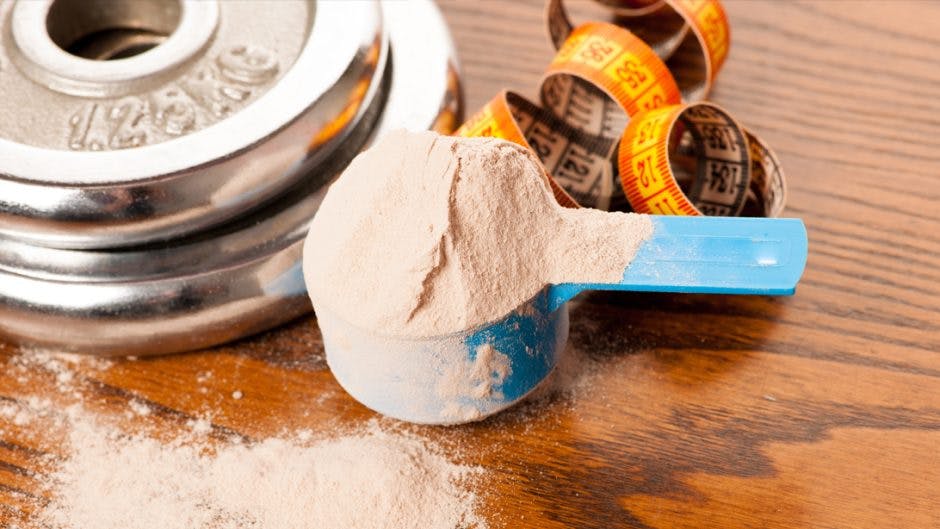TRY OUR HEALTHY SMOOTHIES AND SHAKES
May 5, 2023

When it comes to making muscle, it takes two to tango. First we need the stress of exercise to stimulate the need to build muscles and then we need the extra protein to make sure that happens. In other words, you can’t expect to build thick, 3D biceps by neglecting to eat enough of this macro. And since a little extra protein in your diet can help dull hunger you’re less likely to stuff in too many calories when you eat more- one reason why higher protein diets are a boon to fat-loss efforts.
How much is enough? Step on the scale and then shoot for about 1.5 to 1.8 grams of protein for every kilogram you weigh (that’s at least 116 grams for a 170-pound guy). This will help you achieve a positive net protein balance where muscle protein breakdown doesn’t outstrip muscle protein synthesis.
Since you can only eat so much food over the course of the day, most fitness-minded guys will default to protein powders for an extra dose of muscle-making aminos. Certainly, a scoop or two of protein powder is an easy and convenient way to help make sure you get what you need. And while smoothies, shakes, or whatever you call them are a natural fit for protein powders of all guises, there are plenty more ways that you can utilize these powders in the kitchen for both flavor and nutritional gain. Whether making a muscle-building oatmeal, mixing up your mom’s fabled cookie recipe or boosting your go-to pancakes, there’s room for an added dose of protein. Why have a shake when you can have a cake?
TIPS TO INCORPORATE EXTRA PROTEIN IN YOUR DAILY LIFE
Here are some ways to give your favorite foods some extra protein love
- Stir a scoop or two into a pot of cooked oatmeal.
- Blend some powder into dips like hummus.
- Add it to yogurt for an even bigger protein push.
- Replace some flour with protein powder when making your Sunday pancakes or waffles.
- Stir a couple of scoops into a jar of peanut butter or almond butter for a better spread.
- Use it to add a protein boost to baked goods like muffins, cookies and brownies.
- Incorporate protein powder into homemade energy balls and energy bars.
- Try blending into pureed soups.
- Unflavored powder can be a good binding agent when making burgers, meatballs and meatloaf.
- Consider mixing in a scoop of unflavored protein powder into your mashed potatoes.
- Unflavored powder can also be stirred into hot tomato sauce when its pasta night.

CULINARY CONSIDERATIONS FOR EXTRA PROTEIN PLANNING
Culinary mastery isn’t required to incorporate extra protein powder in your meals, but it is also not something you should do without any thought. Keep these tips in mind the next time you reach for a tub of powder to beef up the protein of your meals and snacks.
- Flavor matters: It is important to match the flavor of your protein powder to the recipe it’s being used in. So a berry-flavored powder could be stirred into yogurt, vanilla would do well in a pancake recipe and plain powder is ideal for savory applications. After all, a caramel-flavored protein powder may not go over too well in a soup recipe.
- Hold the whey: When used in baked goods like muffins, whey or casein protein powder tends to result in a rubbery, less tender texture if used too liberally. Generally, you don’t want to replace more than 25% of the flour in a recipe with whey protein powder or you’ll risk eating something that tastes like a tire. For better texture overall, it’s advisable to try using plant-based protein powders for baking purposes as they are not as heat-sensitive as dairy proteins. A good rule of thumb, if you’re looking to modify existing recipes, is to use 1/3 of a cup of a plant-based protein powder like pea for every 1 cup of flour.
- Liquid assets: When stirring whey or plant-based powders into batters such as pancakes and cakes you should add a little bit more of a moisturizer such as yogurt, milk, applesauce or pumpkin puree to side-step dry results. Protein powder typically has a substantial drying effect when cooked. Also, don’t over-mix the batter – stir gently just until everything is moist.
- Turn down the heat: A slightly lower baking temperature than what is normal – say 325 degrees instead of 350 – will help keep protein powder infused baked goods moister so there is less risk of biting into a hockey puck.
- Bury the scoop: Many powders come with a scoop that is convenient when adding the protein to your post-gym shake or something like oatmeal. But for recipes such as muffins and waffles where you want to use a specified amount, it’s best to measure out the powder using measuring cups.
- The cover-up: Some powders like pea and hemp can impart earthy flavors to dishes. Using ingredients like cinnamon, mashed banana or cocoa can help mask these tastes.
- Trial and error: Finally, not all protein powders behave the same such as dissolving similarly, and the added ingredients in some formulations such as emulsifiers can change how they react in a recipe. So expect that you might have to give a recipe a couple of tries before you figure everything out. And you may have to switch powders to get the results you want.